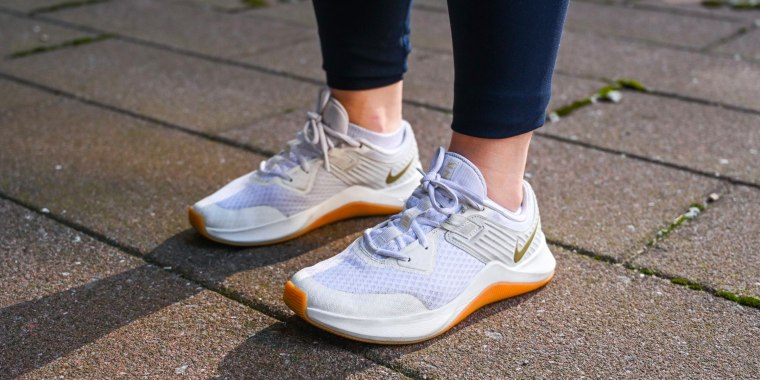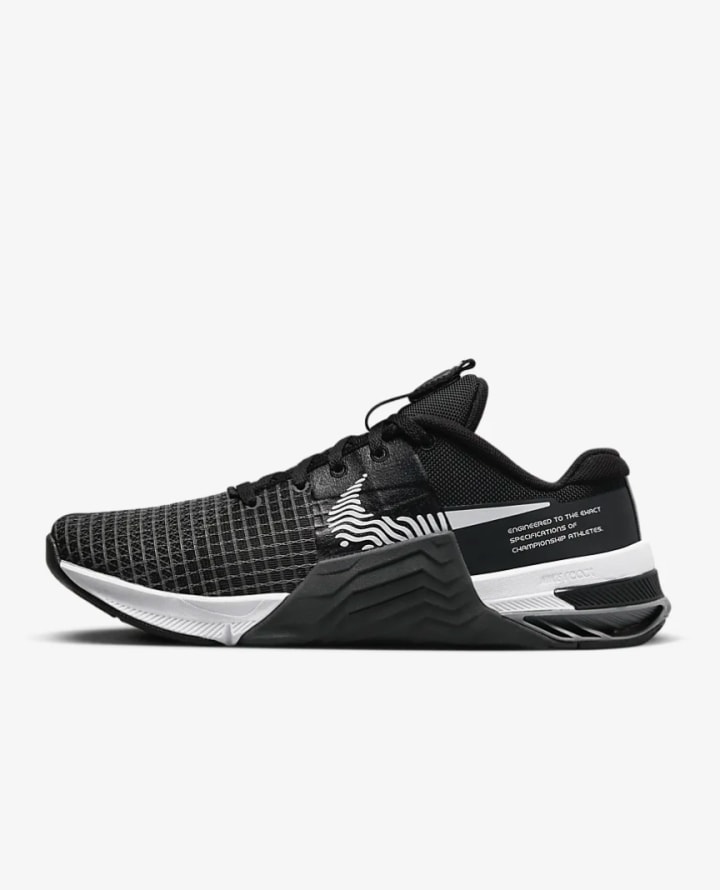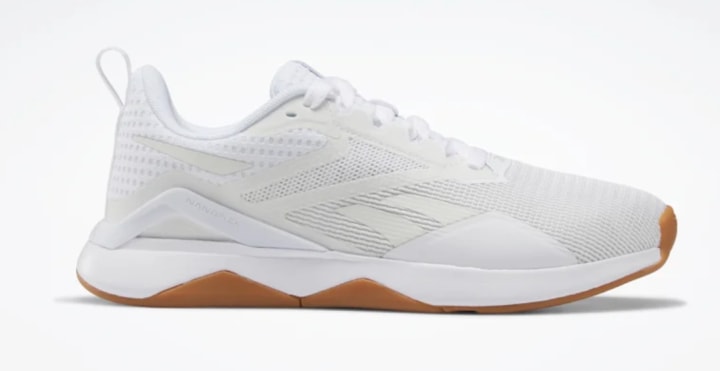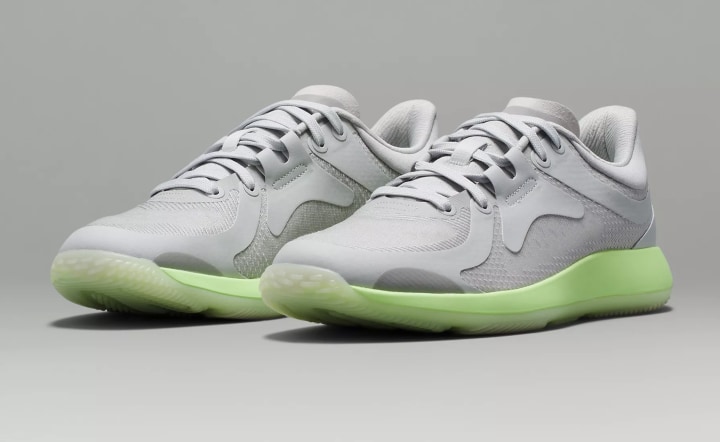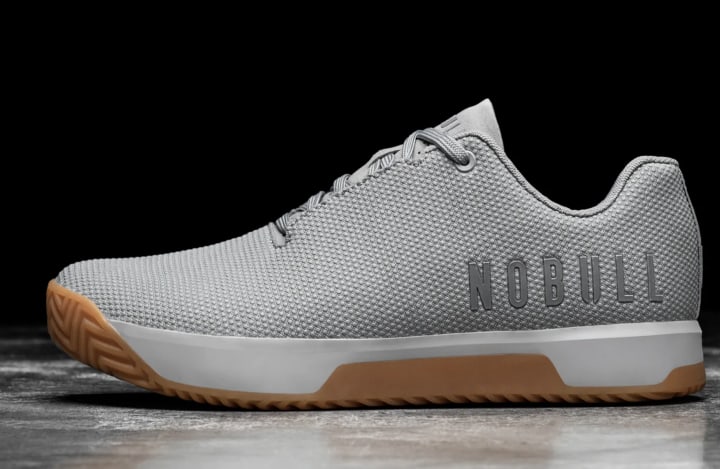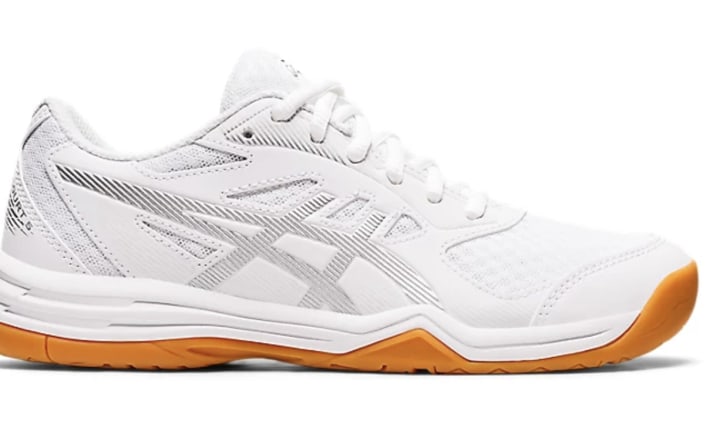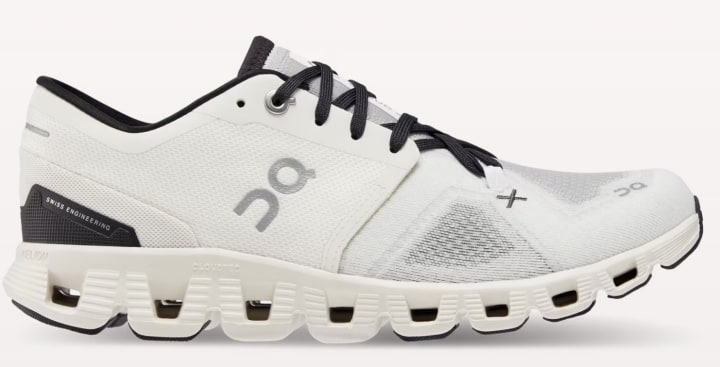If you've made it this far into the year without breaking your New Year's resolutions, that deserves some serious kudos. Instead of giving yourself a measly pat on the back, how about treating yourself to an accessory that will enhance your resolution?
Whether they're searching for running, hiking, cross-training or cycling shoes, they're all outfitted and designed to be put to the test in their specific category. It may be hard to give up the one pair that you've trusted to get you through long walks, jogs, laps around the park, that one HIIT class you sign up for sometimes on the weekend and even running errands.
However, entrusting one pair that was made specifically for the type of workout you're doing could be the smartest shoe decision you make all year.
What are cross-training shoes? | Shoe features to look for | Care tips | Trainers to shop | Meet the experts
What are cross-training shoes?
Where running shoes are narrow, cross-training shoes are wider, as their main goal is to help feet stabilize and grip the ground. Additional stability is key, as these shoes are typically worn while lifting heavy weights during a strength training or HIIT workout.
“Cross trainers are designed and built differently than other athletic shoes based on their functionality," says Anna Jacobi, footwear designer on the high performance run team at Under Armour.
This style of shoe will often have a rubber outsole and an extended, cushioned heel. A cushioned heel helps secure the ankle and feet, further assisting with the stabilization purpose of the shoe.
"Cross trainers are made for multidirectional motion, but they have a wider base than running shoes," says health and fitness expert and TODAY fitness contributor Stephanie Mansour. "The heels on cross trainers are generally a little firmer, which is good for weighted exercises but not as comfortable for long-term walking use."
What features should you look out for in a cross-training shoe?
The features of a cross-training shoe that differentiate them from running shoes or other sneakers are the rubber outsoles that help with grip and gaining traction, their natural wider size and how flat the soles tend to be.
"A flat shoe for a lower body workout is always a good recommendation of mine, but a shoe that is chunkier with more arch to it is usually what I recommend for upper body days, cardio, etc.," says fitness influencer Sophie Sanguedolce. "The chunkier shoes with more of an arch (not a flat shoe) are what I do not recommend on lower body days as you will lose stability and will lose the better grip on the floor when lifting."
Designed with the workout in mind, these features work to accentuate and benefit your feet and training session.
"A training shoe should be closer to the ground, a little wider in the forefront and have a durable upper," Jacobi says. (When she refers to the term "upper," she means the materials on the top portion of the shoe.) "These performance attributes are highlighted and designed through color and form. And this can help consumers differentiate a training shoe from a running shoe. Running shoes typically have more foam, a more breathable upper, faster shape and silhouette.”
Best cross-training shoes, according to fitness influencers and shoppers
Nike Metcon 8 Premium
- Lightweight and comfortable.
- Limited colors and sizes.
Sizes: 6-11; including half sizes | Colors: 2 | Materials: Rubber and mesh fabric
Nike Metcons come in a variety of styles, but they all have the same distinct feature: the rubber grip that lands just beneath the iconic swoosh on both sides of the shoe. This grip is meant to stabilize and help with traction during rope climbs and when switching terrains, according to the brand.
"I used to train with the wrong lifting shoes years ago and the difference it has made has changed my workouts forever," says Sanguedolce, after making the switch to Nike Metcons. "I now feel more mind to muscle connection when using Nike Metcons on lower body days, less back pain from trying to stabilize myself, and I have better form for those reasons as well since I can control the movement of my lifts more."
Lawton also names these her favorite training shoe because "they are perfect for HIIT and lifting, and I always get compliments when I wear them!"
Reebok Nanoflex TR Training Shoe
- Quickly became a "go-to" shoe.
- Run big.
Sizes: 5-11; including half sizes | Colors: 7 | Materials: Mesh fabric and EVA
A defining feature in cross-training shoes are their flat soles. This helps stabilize your body during workouts where you might be lifting heavy weights. Typically, this flat portion is made out of rubber to improve grip, no matter what surface you're on.
"You want a shoe that has stability in its midsole and outsole," says Lawton. "Things to consider while shopping for shoes are a thin and flat sole to support heavy lifting and stability for side to side movements."
These training shoes have a "high-traction rubber outsole," according to the brand.
Lululemon Strong Feel Training Shoe
- Reviewers feel "secure and balanced."
- "Laces stay put and socks stay in place."
- Thick lip at the heel has caused some reviewers issues.
Sizes: 5-12; including half sizes | Colors: 7 | Materials: Doesn't specify
"A stable, powerful platform" is one of the features of this shoe that Lululemon emphasizes. The rubber traction on the sole encompasses the entire bottom, unlike other cross-training shoes.
"I do mostly strength training but also HIIT and cardio so I needed a shoe that was suitable for all types of exercises and these definitely are," said one reviewer, adding that "they're flat enough with tons of grip to give you stability when lifting but cushioned enough to provide support during high-impact workouts."
Nobull Arctic Gum Trainer
- "Love the stability they offer."
- "Super comfortable and lightweight."
- Prone to fraying.
- Customer service and the return process are difficult.
Sizes: 5-11; including half sizes | Colors: 6 | Materials: Made with EVA rubber, brand-specific SuperFabric and a "high carbon rubber"
Wear and tear are nonexistent with these cross-training shoes from Nobull, thanks to the brand's trademarked SuperFabric, which serves as a durable exterior that works to prevent abrasion from rope climbs, constant wear and the weather.
This sneaker features the classic components of a cross-training shoe, such as a rubber outsole for traction and grip with heavy lifting and a lifted heel to ensure that the shoe fits securely.
Reviewers also love these shoes because they are "supportive" and "protective."
Asics Upcourt 5 Training Shoe
- "Provide great support and stability."
- Breathable
- Landing is a bit rough; not as cushioned.
Sizes: 5-13; including half sizes | Colors: 10 | Materials: Primarily made out of mesh
According to Asics, these shoes offer "good stability for multidirectional movements," matching Mansour's description of what a quality cross-training shoe should strive for.
The highly elevated heel helps to secure the ankle, further stabilizing your feet during heavy lifting sessions. Multiple reviewers noted that these shoes were worn to play volleyball, further emphasizing the traction feature that cross-training shoes have.
On Cloud X 3 Training Shoe
- Cushioning is "just right."
- "Such good arch supports."
- Rubbed against heels/ankles
- "Shoelaces sometimes untie."
Sizes: 5-11; including half sizes | Colors: 10 | Materials: "35% recycled content"
Weighing in at less than a half of a pound, ON notes that the lighter the shoe, the better the response time. A ridged bottom differentiates this cross training shoe from others, but it still promises to provide ample support no matter if you're doing crunches or calf raises.
The star lacing design keeps your foot securely in place without the need to tie and retie them each time you wear them.
Meet the experts
- Anna Jacobi is a footwear designer on the High Performance Run team at Under Armour.
- Stephanie Mansour is a health and fitness expert, serves as a fitness contributor for TODAY and a two-time Emmy-nominated TV host of “Step It Up with Steph.” Mansour has a BA in communications, along with personal training, yoga, Pilates and professional life coaching certifications.
- Julie Lawton is a fitness influencer based in Connecticut.
- Sophie Sanguedolce is a fitness influencer based in California's Bay Area.
